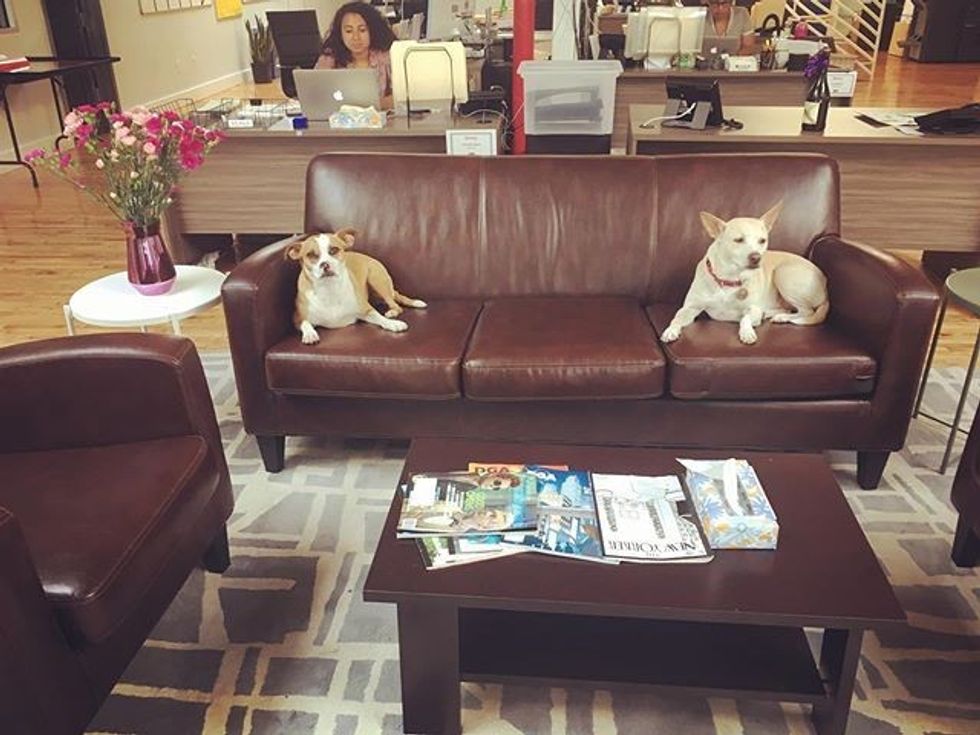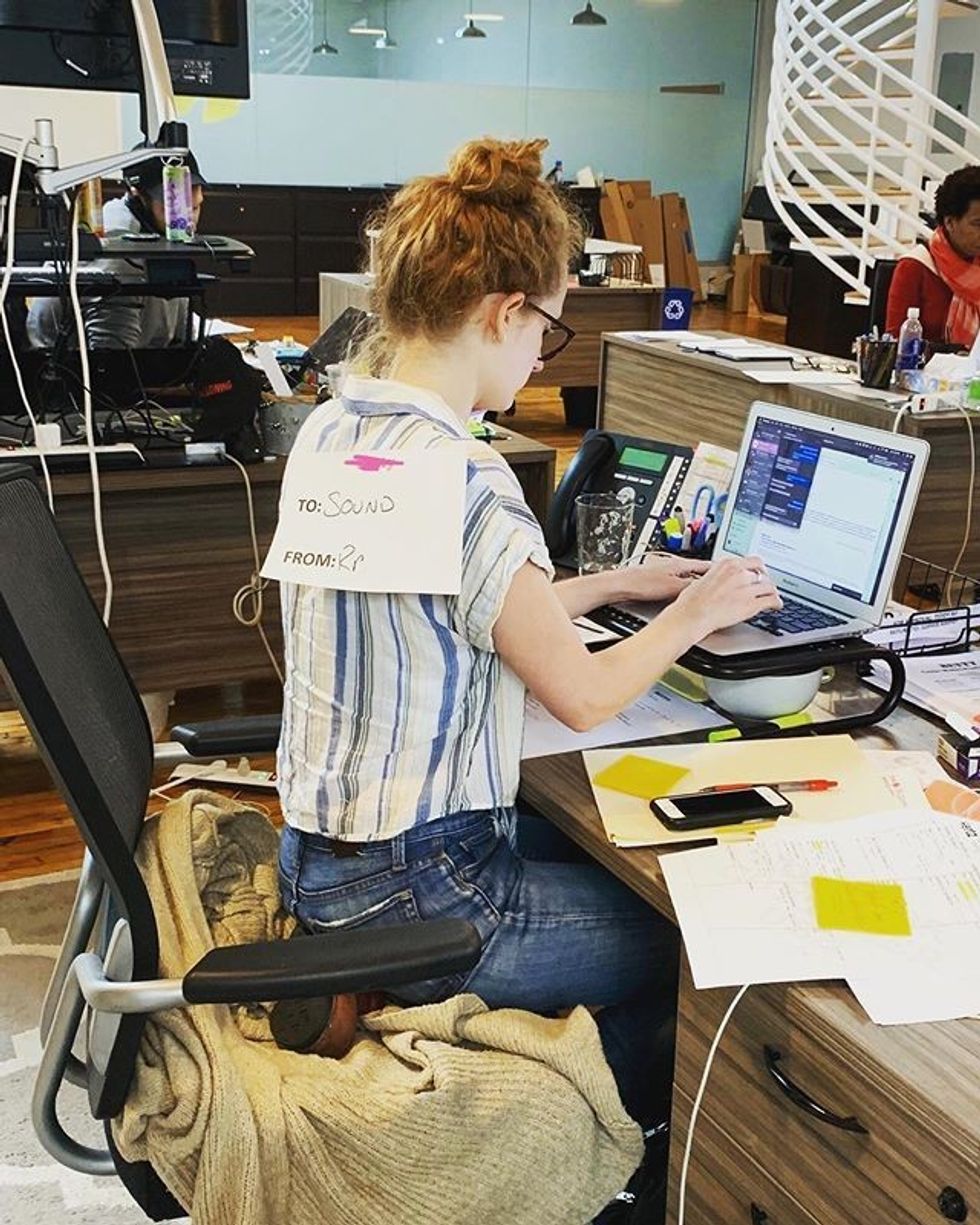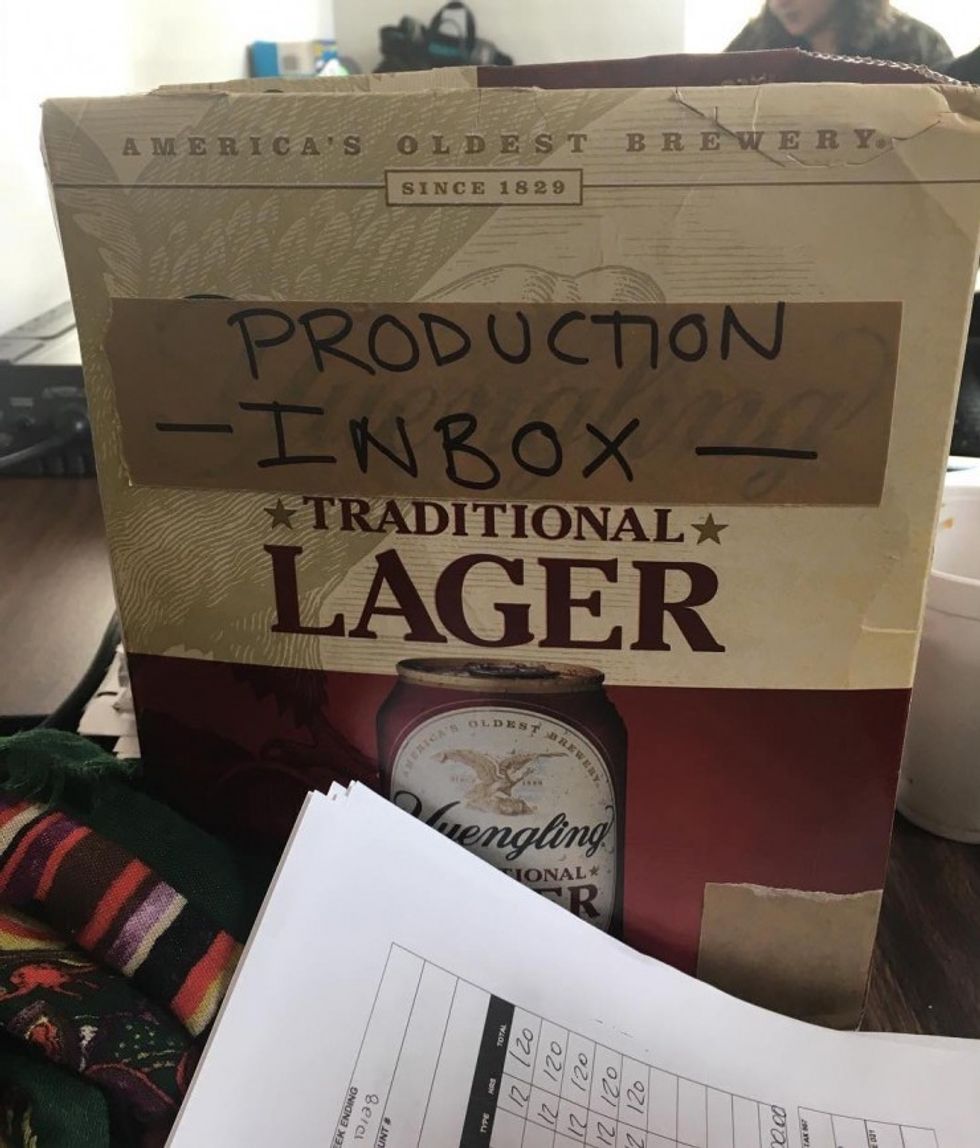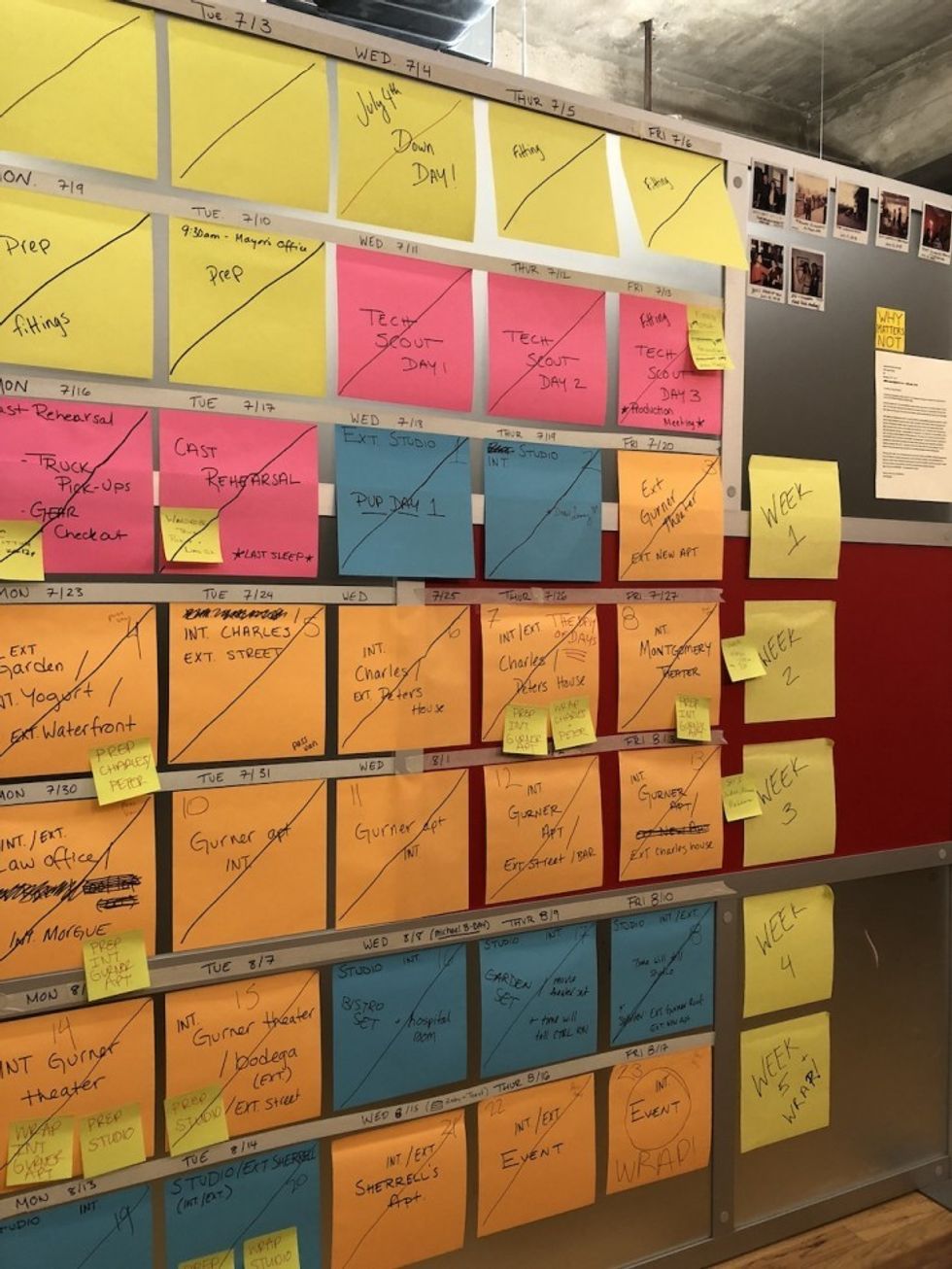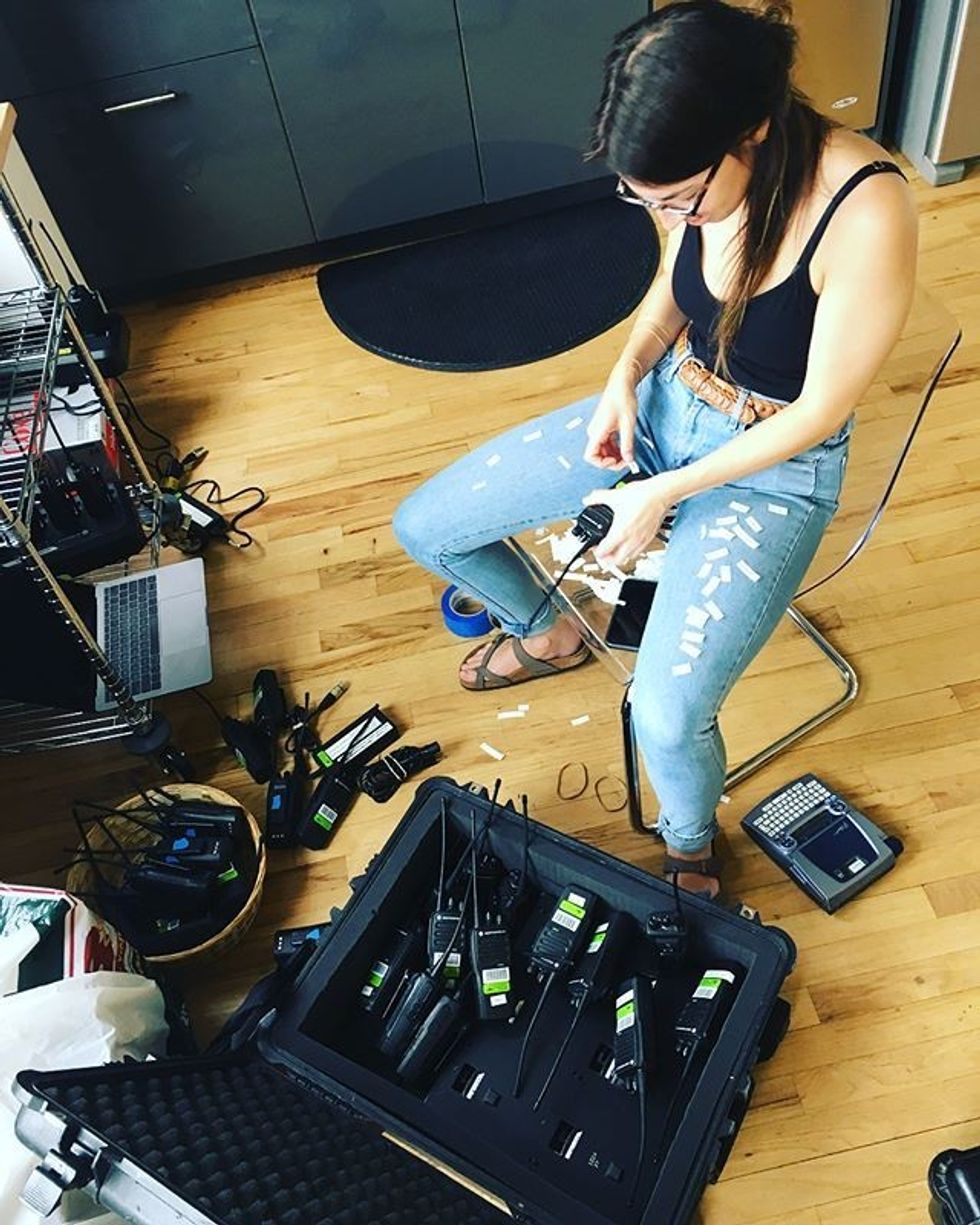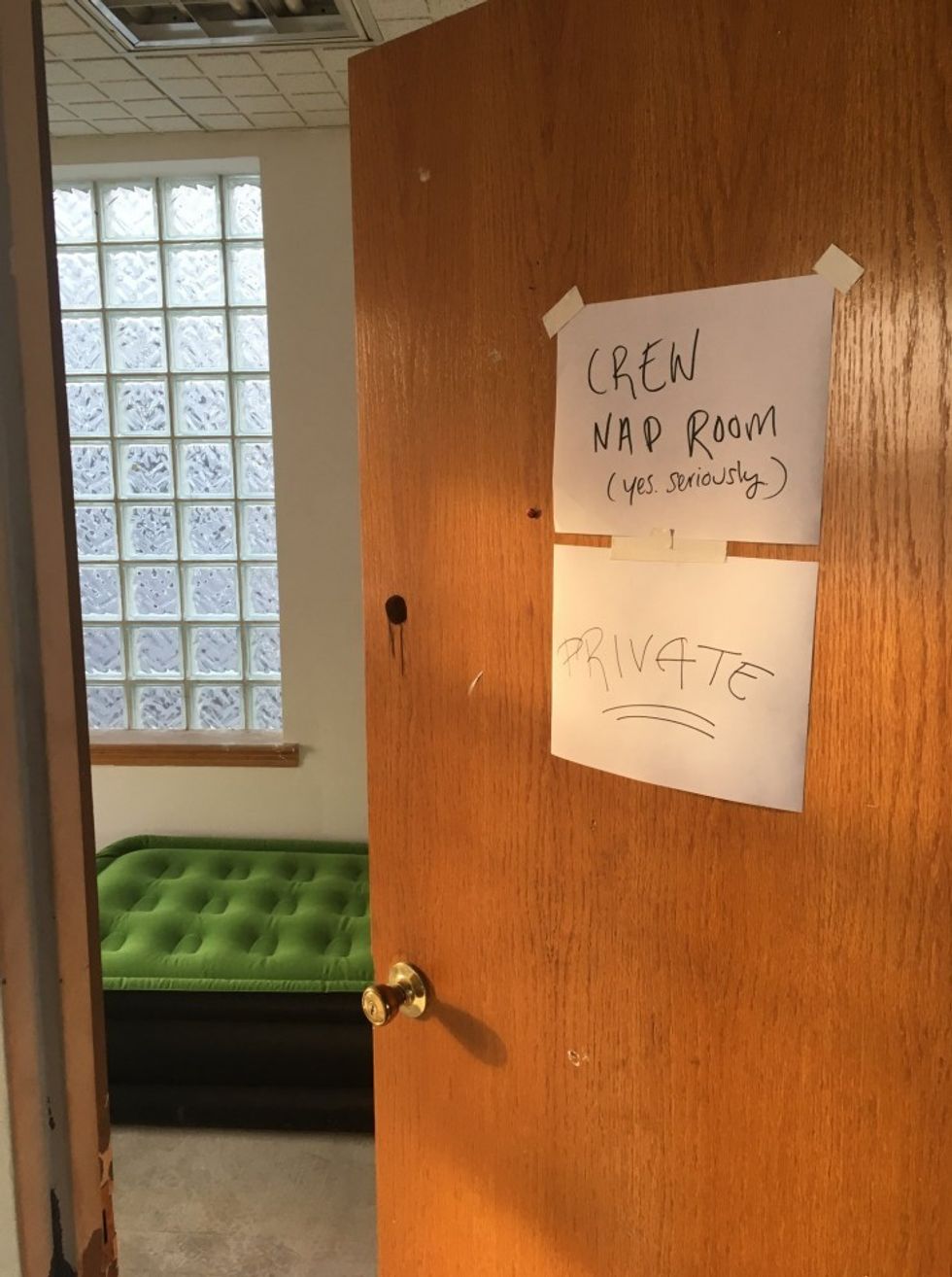Life in a Production Office: A Filmmaker's Survival Guide
For a lot of people in the film industry, work starts and ends on set. But for many others, there’s a whole other world in the Production Office.

Here is your definitive guide to life in the PO, for anyone who has ever wondered, “What actually goes on in there???”
Let’s start at the beginning. During the development stage of the project, the producers will have scouted a location for the office. When the producers are scouting the ideal PO, they’re looking for enough space to house multiple departmental offices, storage for art, props, and wardrobe, conference rooms, casting rooms, and edit suites.
Of course, not every production will have the luxury of all of that, and no PO is the same—POs can range from whole building complexes to somebody’s mom’s guest room or a picnic table outside of set.
Pre-Production
Let’s rewind it back to day one. Not day one of shooting, but day one of the PO. Typically, the Production Office Coordinator (POC) is the one in charge of opening up. Soon enough, there will be a large influx of people landing for pre-production.
During the cozy, quiet, early days, the Coordinator spends their time erecting office calendars and determining the layout of workspaces for the incoming departments. Where will everyone sit? Does anyone have beef with anyone else? Who needs to be closest to whom? Who needs absolute quiet and privacy? (Usually the director.)
During pre-production, the following departments and people set up shop and spend days-to-weeks-to-sometimes-months planning, designing, dreaming, and setting up the dominoes for the project at hand: Director(s), Show Runner(s), Producers, DP(s), ADs, Accounting, Art, Legal/Clearances, Locations, Transportation, and Wardrobe
And then, in the middle of it all, you typically have the Production bullpen. This is the heart of the office and the pulse that keeps it running. This team is run by the Coordinator and it consists of the Assistant Production Office Coordinator (APOC), the Secretary, and several Office Production Assistants (PAs). Their job is to support everyone else.
Throughout prep, the Production team will maintain the calendars, schedule meetings, distribute documents, and disseminate necessary information to the rest of the departments while they plan the film. They handle the logistics so that the creatives can focus on making movie magic!
Their job is also to execute the plan laid out by the script, budget, and schedule. These documents are road maps, created by the “Above the Line” staff (Directors, Writers, Producers, and 1st AD) that delineates the way the movie will be made and where the money will go to make it happen. The Production team then takes these road maps and makes all of the necessary phone calls and emails to realize them.
The Production team must hire the shooting crew, obtain all of their legal paperwork, and then coordinate with them on reserving the specific equipment they will need.
They must open accounts with vendors, reserve that equipment, and plan for its transportation to set.
They must hire the catering team who will feed the crew and plan a series of meals with them that will accommodate the crew’s dietary restrictions. (For tips on the best meals and crafty, see this article).
They must reserve hotels and rental vehicles for cast and crew.
They must work closely with the locations department and the state authorities on permits and location contracts.
They must work with the unions (SAG-AFTRA, IATSE, etc.) to meet their standards of practice and paperwork.
They must file everything, they must print everything, and they must backup everything in triplicate! It may sound mundane, but these administrative tasks are the oil that keeps the motor running.
Because, above all, the Production team’s job is to prevent problems before they happen, and to solve the ones that do happen as quickly as possible.
If you have done your work right as a member of Production, your hardest week of work should be the one right before Principal Photography starts; and everything else should be easier from there.
In the weeks immediately before shooting, the Production Office is traditionally handling several “Tech Scouts” where the key shooting crew visits locations and makes last-minute notes or changes to their plans based on the restrictions of the space. For those scouts, the PO must print itineraries, scripts, and schedules for all attending, ensure that everyone is made aware of when and where to arrive, that they have food and coffee when they land, and enough vehicles to transport them where they need to go.
In those weeks, you will also have a large Production Meeting where the 1st AD will walk the whole crew through the shooting schedule, and address any last-minute questions or concerns. Food, water, office space, scripts, and schedules must be provided for this meeting. And the same goes for any other kinds of large or important meetings, such as table reads and camera tests, that happen in the final days before production.
And you’re almost there. But you haven’t even started yet.
It’s the night before Day 1 of Principal Photography, and nothing is quiet in the PO. The printers are warm and pumping out hundreds of stacks of sides and call sheets, details are being triple checked, coffee is brewing well into the evening, and someone, somewhere, has a heart attack as they send the first Call Sheet email, praying that it’s correct.
On this night, there is a deep sense of comradery in the PO. The battle was fought and won, and tonight you toast to every plan in place, knowing well that tomorrow it could all fall apart.
Production
And just like that, 2/3rds of the office disappears. Shooting has commenced, and everyone is on set except for Accounting, Legal, Coordinators, departmental deputies (Art Director, Asst. Location Manager), and PAs who float between set and the office, and of course, the Production bullpen. At this point, an Assistant Editor may also set up shop in the office to manage the footage as it comes in set each day.
Once production starts, the focus narrows. If prep is macro, production is micro. The new battle is about making it through each day as it comes.
For every day of shooting, the Production team handles the following paperwork (at the bare minimum):
- Call Sheets (the daily plan)
- Sides (the relevant script lines for the day)
- Location Maps (where everything is on set)
- Actor Deal Memos (contracts)
- Crew Deal Memos (contracts)
- Extra Releases (permission to use their image on screen)
- Camera Reports (everything that was shot that day)
- Exhibit Gs (Actor Timecards)
- Out Sheets (the time that each crew member leaves set)
- Production Reports (everything notable that happened that day, literally)
These contracts and reports are crucial documentation, and missing any of them could prove disastrous to the film.
During this time, the office also acts as the mouthpiece between set and the outside world. They operate in the background solving and preventing problems as they arise. In an ideal world, the production office enables the on-set crew to run as a closed environment, to execute the shooting plan as smoothly as possible.
Wrap
Wow! You made it through production! All the documents were collected, each day was crossed off the calendar, and maybe your team only messed up the sides once. It happens.
Ideally, the office has planned an exciting wrap party with passed apps and a cool DJ, and the wrap gifts came in early so you can pass them out on the last day of set.
Now what?
I once heard someone say that a movie production is basically a traveling circus. We invade a town, create an enormous impact on that town, and then vanish as if upon the wind, just as quickly as we arrived.
Well, cleaning up after a production is like cleaning up after a traveling circus, too.
The last crew standing on a production, aside from those who stick around for Post and Distribution, are usually the Accounting and Production teams. These teams stick around and ensure that everything is accounted for, all the buttons are buttoned, and nobody leaves without getting paid.
During wrap, Production creates a “Wrap Book” with every single relevant file to the project, as well as a “Wrap Memo” with instructions. The idea is that anyone should be able to pick up these two documents and answer any question they have about how the production went.
And just as quickly as it came, now it’s over. Bankers boxes are mailed off, and the Coordinator hands off the keys to this building that was home for just a few months.
Sophia Harvey has coordinated projects big and small, and her favorite “Production Office” was the back of a golf cart on the beach of a 6-mile island at the bottom of the world.
